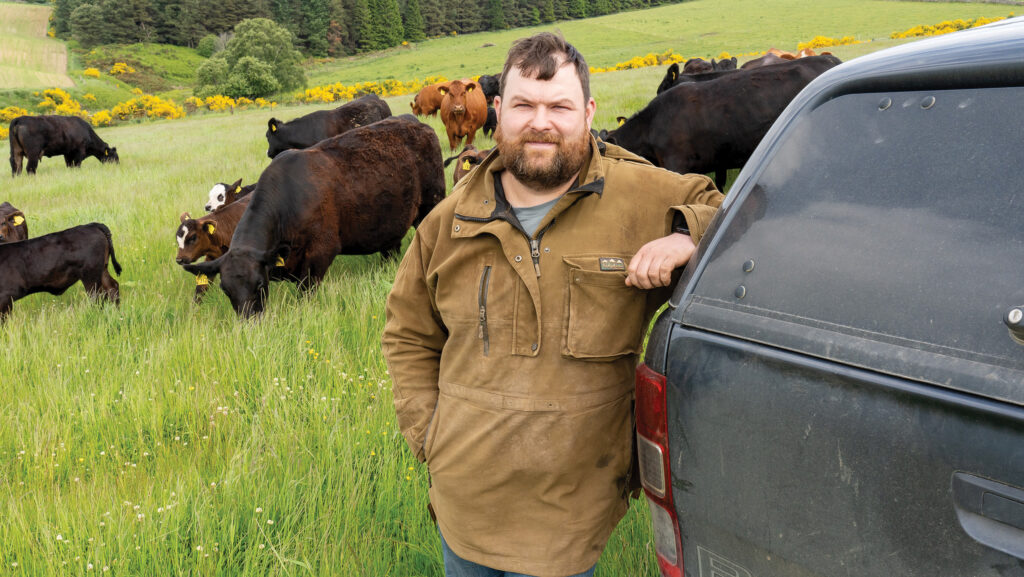Farmer Focus: Visitors bring learning benefits to the farm
 Duncan Morrison © Angus Findlay
Duncan Morrison © Angus Findlay July is one of the months I look forward to most. It signals the end of a pretty busy period that began back in April, where calving and lambing led on to forage crop establishment, first cut silage, breeding synchronising programmes, and shearing.
It’s quite often easy to think that once calving and lambing are over the pressure is off, but there is still a power of work to be done.
We synchronised 65 cows and heifers for inseminating, which will allow us to bring in some exciting genetics into the herd.
See also: 4 reasons to use artificial insemination in beef herds
July is also a month where the social battery might be tested, as we will be hosting quite a number of people on farm.
First, we have 30-40 Angus breeders from a nearby club for a herd tour, followed by our summer QMS Monitor Farm open meeting, focusing on establishing, or expanding, a suckler herd.
We then host a group of American ranchers at the end of the month. It can be reasonably stressful hosting people, but it is usually a really beneficial experience, making new connections, and learning about how they farm.
I recently had the pleasure of spending time with an Argentinian cattle breeder. His perspective of this country, from someone on the outside looking in, was fascinating.
It was so interesting hearing about the many things we have in common, much more than I had expected.
He was blown away by the quality and quantity of grass we have available during the peak grass growing season – something that he could only dream of.
While touring the Royal Highland Show, he was surprised how different the cattle were to those back home.
His grandfather had imported Angus bulls from the Perth sales in the 1950s and 1960s. Yet we are not seen as the country to find grass-based cattle anymore.
Farming without support, in an extensive, grass system, the focus was solely on native breeds that thrive on pasture only: feminine cows that are thick, deep, fleshy and structurally sound; masculine bulls that are mobile, structurally sound and able to cover plenty of cows.
With our industry constantly evolving, market volatility and doubts over future funding, I think it begs the question whether we should be looking back at what made our nation the stud farm of the world.

